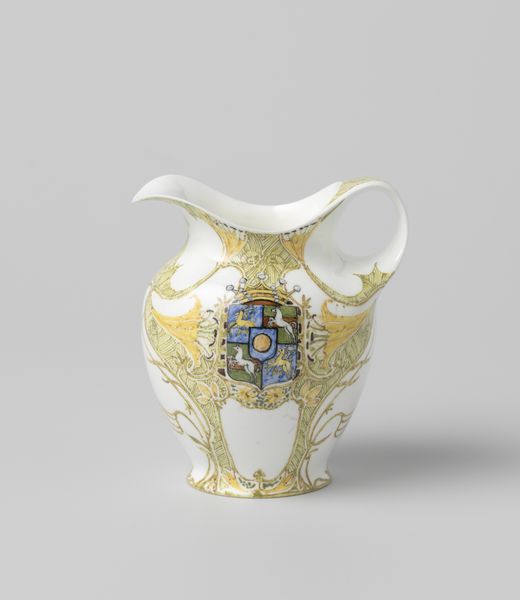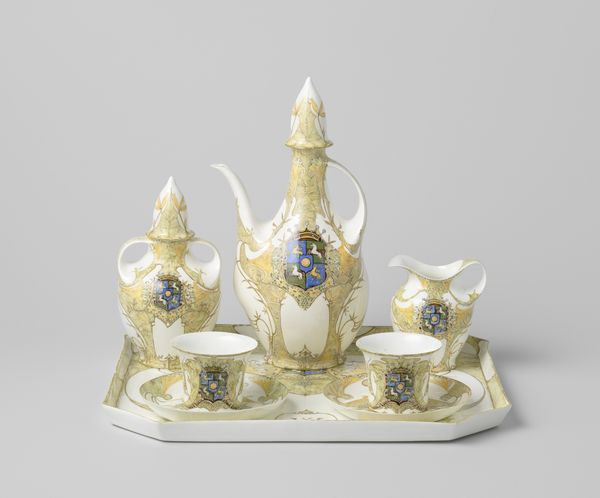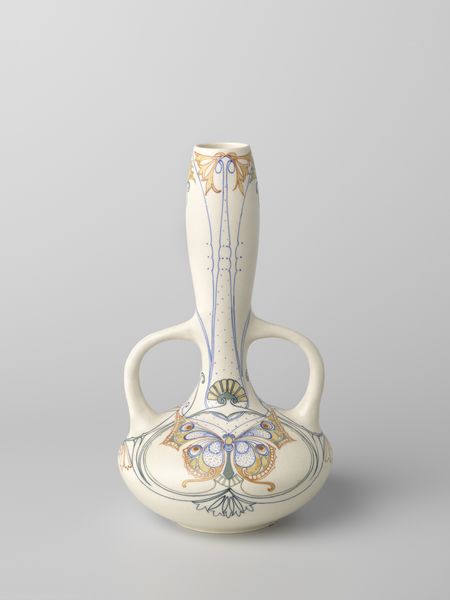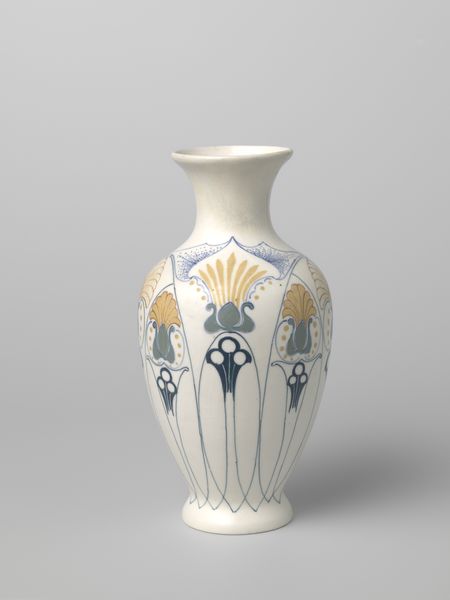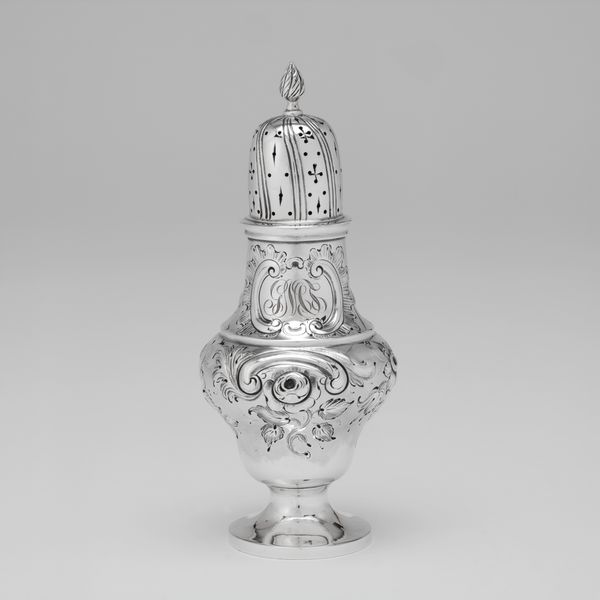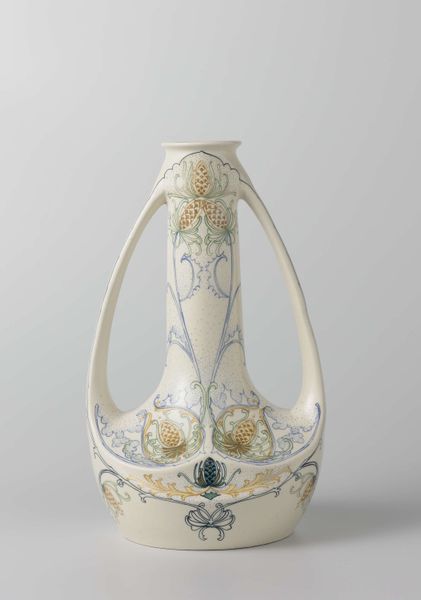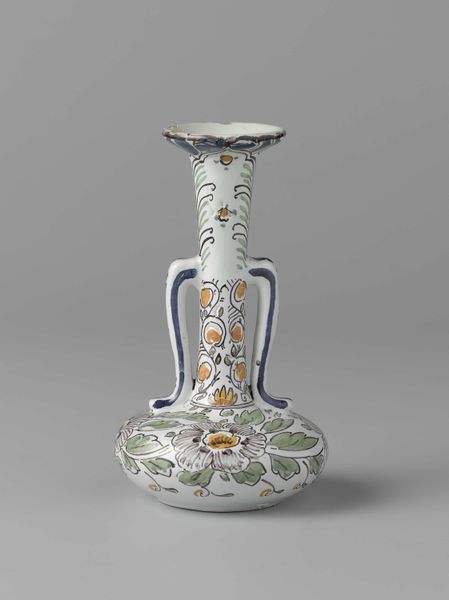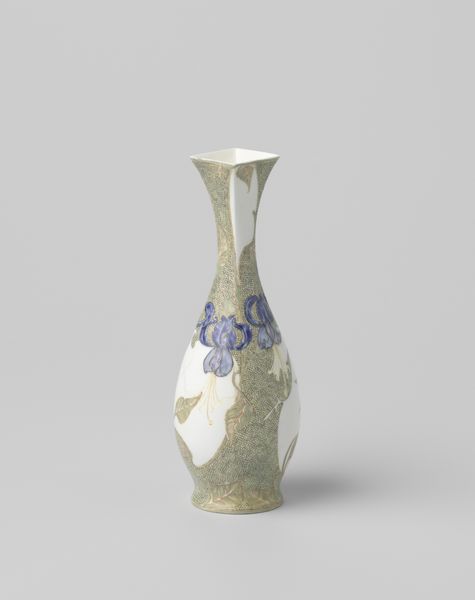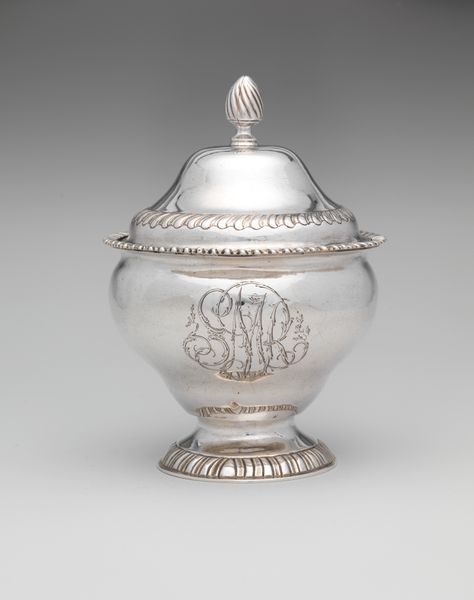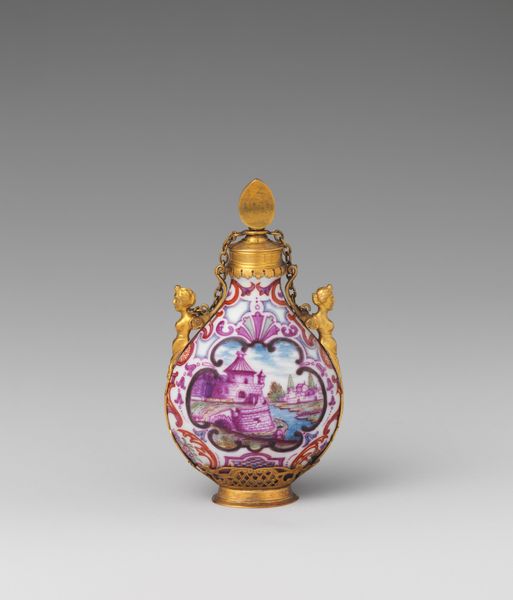
Suikerpot, deel van een tête-à-tête, beschilderd met lelies 1900
0:00
0:00
ceramic, porcelain
#
art-nouveau
#
ceramic
#
porcelain
#
decorative-art
Dimensions: height 11.5 cm, width 9.2 cm, depth 10.2 cm
Copyright: Rijks Museum: Open Domain
Curator: This lovely object is a sugar pot from a tête-à-tête, crafted around 1900 by the Rozenburg pottery factory. Notice the delicate porcelain painted with lilies in the Art Nouveau style. Editor: My first impression is a sense of aristocratic refinement, even austerity. The pale yellows and the precise floral design create a mood of restrained elegance. Curator: Exactly! Rozenburg was renowned for pushing the boundaries of ceramic production. They used complex firing techniques and employed highly skilled artisans, often women, to achieve this level of detail and translucent quality in the porcelain. The object becomes a symbol of class and status. Editor: The lilies themselves speak volumes. They are commonly associated with purity, and even royalty in some contexts, making this sugar pot so much more than a mere household item. And considering it's part of a tête-à-tête, there is a ritual, performative aspect related to consumption. I'd want to investigate what was served from this type of set and by whom. Curator: It also reflects the broader economic and social shifts of the time. As industrial processes became more refined, the market for luxury goods expanded. A piece like this, therefore, represents a merging of mass production capabilities and exclusive artistic design, with access dictated by privilege. Editor: So the question becomes, who had access to this luxury? Examining ownership records, historical menus, and even social etiquette manuals of the period might give us clues. Also, lilies as signifiers of purity might signal to the domestic role ascribed to the users of the tete-a-tete: How does this object reify, resist, or engage the expected roles and behaviour of women in domestic sphere at the turn of the century? Curator: Thinking about the hands involved, from the potter shaping the form to the painter adding the decoration to the women using the finished set, connects us to labor, skill, and material value. Editor: Understanding who produced, who consumed, and the values associated with this sugar pot opens a window into turn-of-the-century Dutch society. Curator: Yes, indeed, beyond its aesthetic appeal, it provides tangible evidence of technological advancements and shifts in class dynamics during the early 20th century. Editor: Absolutely. It shows us the intricate ways in which even an apparently simple object embodies culture, politics, and labor.
Comments
No comments
Be the first to comment and join the conversation on the ultimate creative platform.

